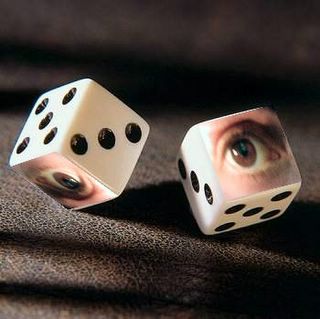This month, I'd like to introduce you to a
tile-laying game, based around a theme featuring the medieval French town of
Carcassonne, which was known for it's fortified city walls. This game, for 2 to 5 players, was designed
by Klaus-Jürgen Wrede, and published in Germany in
2000. At it's core, this game is an
exercise demonstrating the principle of return on investment.
The game board is built as you play, starting
with one tile of terrain. Each player
has seven pawns in their color, which are placed on the board during play, to
remain until certain conditions are met, at which point they score and may be
used again. Turns are simple: draw a
tile, place it on the table (sharing at least one edge with another tile, and
making sure the terrain matches), then optionally place a pawn on the tile just
played.
A unique term now used commonly among board
gamers originated with this game. The
wooden person figures are referred to as “followers”
in the game rules, although now, most people in the board game community call
them “meeples.” As the story goes, Carcassonne was being
played at a convention, and a girl playing called her followers “meeples,”
short for “my peoples.” The term stuck, and now some variant of “meeple”
is frequently used to refer to the wooden pawns in different games.
Each terrain tile shows one or more of four
different features. When placing your
meeple, you choose one of these features, which determines how and when you
will score that pawn, returning it to your supply.
•
City:
Meeples placed here are Knights. A city scores when it is completely
surrounded by walls.
•
Road:
A follower here is a Thief. Roads score when it has two endpoints.
•
Monastary:
Pawns placed here are Monks. A monastary scores when the tile it is on is
surrounded by 8 other tiles.
•
Plains:
Placing a meeple in the grass designates it as a Farmer. They score points
only at the end of the game, based on how many completed cities the plain touches.
When placing your meeple, the feature you're
claiming cannot connect to the same kind of feature claimed by another
pawn. If, however, you claim a type of
territory and then later place another tile that connects the two territories,
you may potentially claim points when that feature is completed.
Since your seven figures are essentially trapped
on the board until the city, road, or monastary is complete (or until the end
of the game), there are some important decisions to make during play. Use your figure now, or save it for later? Finish a city to get that meeple back and
score, or make it bigger for more points later?
At the end of the game, players score reduced points for incomplete
features.
Sound like fun?
As always, to play this or many other games, contact me about starting a
family game night club at gamerseye@swbell.net.


No comments:
Post a Comment